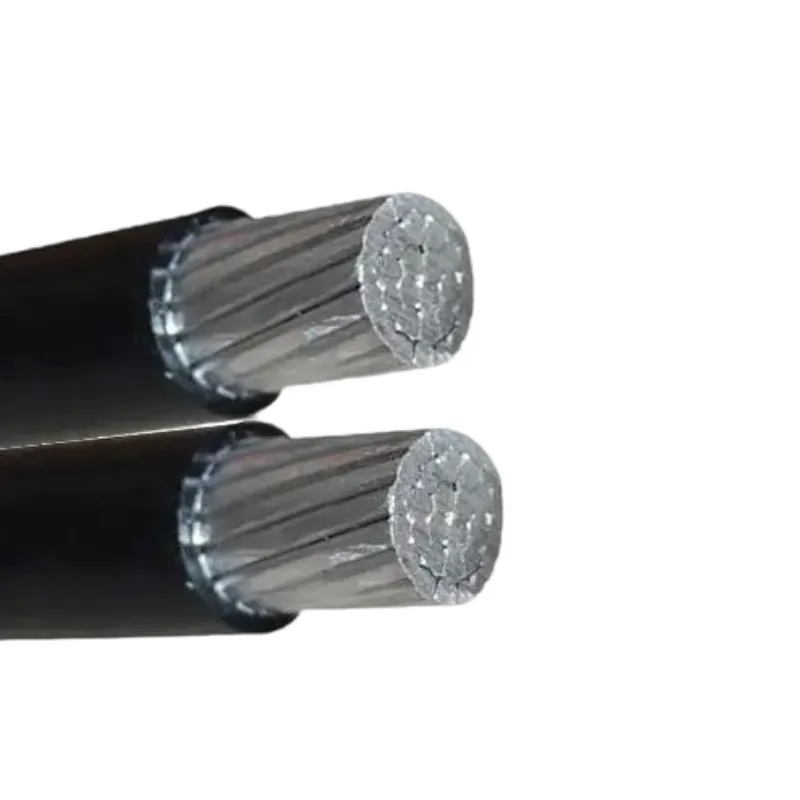Time: 2025-04-22 14:14:22 Source: Henan Province Jianyun Cable Co., Ltd.

Aerial cables, also called overhead cables, are cables suspended above ground, typically supported by utility poles or towers. They are used in both electrical and telecommunication systems, as discussed in prior articles. Aerial cables can be categorized into two main types: power cables (e.g., for electricity transmission) and communication cables (e.g., for data transmission).
Power aerial cables, like ACSR (Aluminum Conductor Steel Reinforced) or aerial bundled cables (ABC), are designed to carry electricity, ranging from high voltages (e.g., 66 kV to 765 kV) to low voltages (e.g., 120V). Communication aerial cables, such as copper telephone lines or fiber optic cables, transmit signals rather than electricity for power. Aerial cables are like the skyways of utility networks, some carrying the “current” of electricity, others the “flow” of data.
Whether electricity runs through an aerial cable depends on its type and purpose. Below is a table summarizing different aerial cables and their relationship with electricity:
| Cable Type | Carries Electricity? | Voltage/Data |
|---|---|---|
| High-Voltage Power (ACSR) | Yes | 66 kV to 765 kV |
| Medium/Low-Voltage (ABC) | Yes | 1 kV to 600V |
| Telephone (Copper) | No (signal only) | Low voltage signals (e.g., 48V for phones) |
| Fiber Optic | No (data only) | Optical signals |
| Hybrid (e.g., OPGW) | Yes (grounding) + Data | Grounding + Fiber optic data |
Power Aerial Cables: Electricity does run through aerial power cables. High-voltage ACSR cables transmit electricity over long distances (e.g., 230 kV from a power plant to a substation), as discussed in overhead power line identification. Medium and low-voltage ABC cables distribute electricity locally, such as a 400V ABC cable supplying a rural home. These cables carry alternating current (AC), though some may carry DC in specific setups (e.g., HVDC transmission).
Communication Aerial Cables: Electricity does not run through most communication cables in the form of power delivery. Telephone lines carry low-voltage signals (e.g., 48V for phone operation), not significant electrical current for power. Fiber optic cables transmit light signals, not electricity, making them non-conductive. However, hybrid cables like OPGW (Optical Ground Wire) serve dual purposes—acting as a grounding wire for power lines while carrying fiber optic data.
Aerial power cables are like the rivers of an electrical grid, channeling the flow of electricity, while communication cables are like messenger birds, carrying signals without the “current” of power.
Aerial cables that carry electricity, such as ACSR or ABC, require careful handling and maintenance to ensure safety due to the risks of high voltage and exposure. Key considerations include:
Managing aerial power cables is like maintaining a high-altitude tightrope—it’s safe when properly secured and isolated, but requires vigilance to prevent dangerous falls or shocks.
Electricity does run through aerial cables designed for power, such as high-voltage ACSR cables (66 kV to 765 kV) and medium/low-voltage ABC cables (1 kV to 600V), used for transmission and distribution. However, communication aerial cables like telephone or fiber optic lines do not carry electricity for power, instead transmitting signals or data, with exceptions like OPGW combining grounding and data. Safety considerations for power-carrying aerial cables include ensuring clearance, weather resistance, grounding, and regular maintenance to mitigate risks. Understanding these distinctions ensures safe interaction with aerial cables in utility systems.